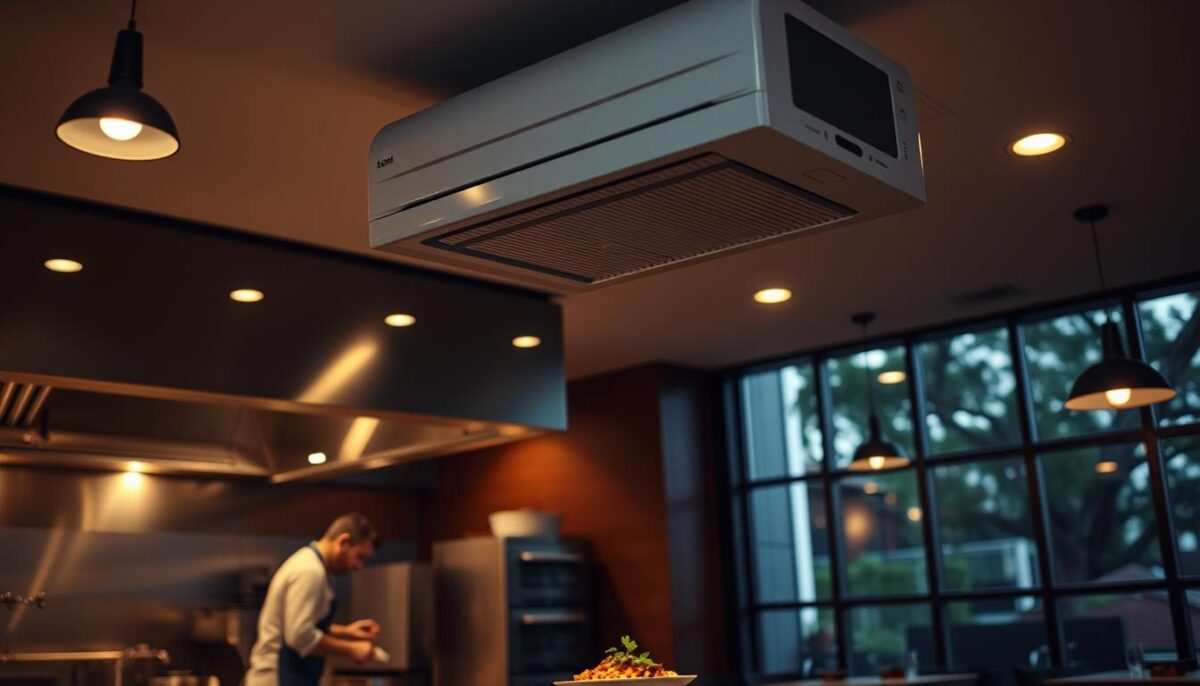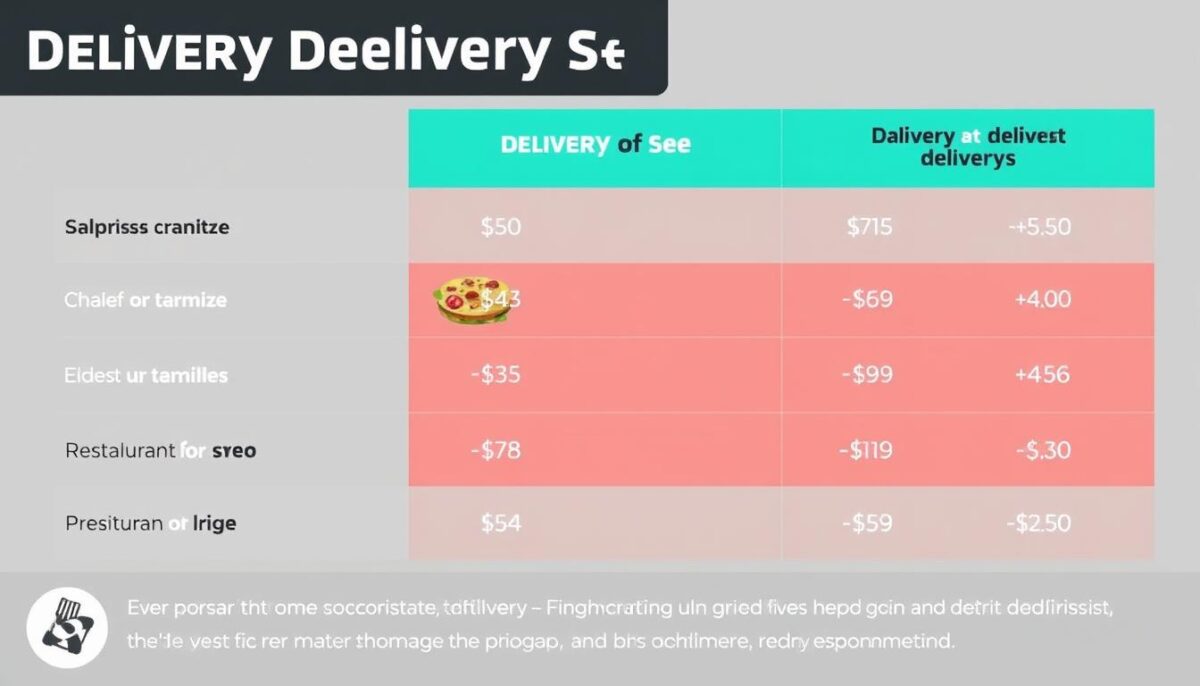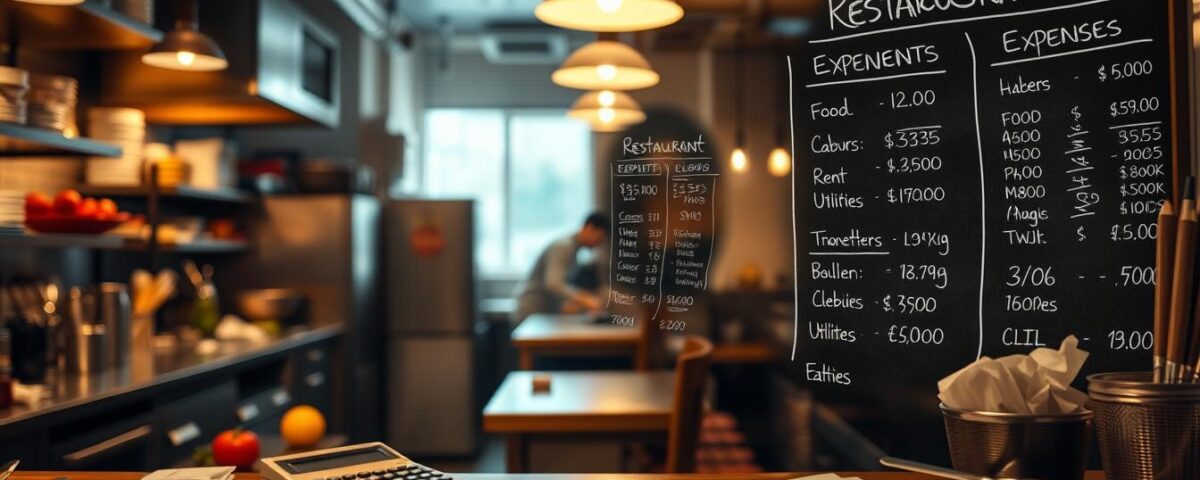
The Legal Checklist Every New Restaurant Must Complete Before Day One
July 16, 2025
6 Supplier Red Flags Every Restaurant Owner Must Avoid
July 17, 2025As a restaurant owner, I’ve learned that running a successful business involves more than just creating delicious food – it requires careful financial management to identify and control costs that silently drain profits.
I recall a time when I discovered that overlooked expenses were eating into my bottom line. It was a wake-up call that led me to scrutinize my operations and uncover the hidden costs lurking beneath the surface.
Did you know that hidden costs can account for up to 20% of a restaurant’s total expenses? This staggering statistic highlights the importance of being proactive in identifying and managing these costs to protect your business and maximize your profits.
So, what are these costs that can make or break your restaurant’s financial performance?
Key Takeaways
- Understand the common hidden costs that affect restaurant profitability
- Learn how to identify and manage these costs effectively
- Discover strategies to optimize your operations and boost your bottom line
- Improve your financial management to ensure long-term sustainability
- Maximize your profits by minimizing unnecessary expenses
Understanding the Impact of Hidden Restaurant Costs
The profitability of a restaurant is influenced by various factors, including hidden costs. As a restaurant owner, managing these costs is crucial to maintaining a healthy bottom line.
What Exactly Are Hidden Expenses in Restaurants?
Hidden expenses in restaurants refer to unforeseen or unaccounted costs that can significantly impact profitability. These can include fluctuating ingredient prices, equipment maintenance, and other operational expenses that aren’t immediately apparent.
For instance, sourcing high-quality ingredients can be challenging, and prices can change frequently. This can make the cost of ingredients add up quickly, cutting into my profits.
How Hidden Costs Affect Your Bottom Line
Hidden costs can have a substantial impact on a restaurant’s financial performance. Here are some key points to consider:
- Hidden costs can compound over time, eroding profit margins without immediate awareness.
- Tracking major expenses and revenue streams can make it easy to miss the cumulative impact of smaller hidden costs.
- These expenses directly reduce the bottom line by increasing overall operational costs.
| Hidden Cost | Impact on Bottom Line | Potential Savings |
|---|---|---|
| Ingredient price fluctuations | Reduced profit margins | Negotiating with suppliers |
| Equipment maintenance | Increased operational costs | Regular maintenance schedules |
| Energy consumption | Higher utility bills | Energy-efficient equipment |
By understanding how these costs affect my financial statements, I can better prioritize which issues to address first based on their impact on my restaurant’s profitability.
Equipment Maintenance and Unexpected Breakdowns

Maintaining restaurant equipment is crucial for preventing unexpected breakdowns that can disrupt service. As a restaurant owner, I’ve learned that regular maintenance is key to extending the lifespan of equipment and avoiding sudden failures.
True Costs of Commercial Kitchen Equipment
The true cost of commercial kitchen equipment goes beyond the initial purchase price. It includes maintenance, repair, and eventual replacement costs. I’ve found that factoring in these costs helps me budget more effectively for my restaurant’s equipment needs.
Preventative Maintenance Strategies
To reduce expenses related to equipment maintenance, I’ve implemented preventative maintenance strategies. This includes regular cleaning, scheduling routine maintenance checks, and training staff on proper equipment usage.
Budgeting for Equipment Replacement
Even with proper maintenance, equipment has a finite lifespan. I’ve learned to create a dedicated equipment replacement fund by setting aside a small percentage of my monthly revenue. This helps me prepare for inevitable future purchases and avoid being caught off guard when something needs replacing.
By researching the average lifespan of each major piece of equipment, I can develop a staggered replacement schedule. This prevents multiple large purchases from coinciding and helps manage cash flow. I also track the maintenance history and repair costs, which aids in identifying when an item is becoming more expensive to maintain than to replace.
When budgeting for replacements, I consider not just the purchase price but also installation costs, staff training time, and potential operational disruptions. Additionally, I’ve found that leasing options for certain equipment can help manage cash flow while ensuring I always have functioning, up-to-date tools in my restaurant.
Food Waste and Inventory Management

Food waste is a silent profit killer in the restaurant industry. The way restaurants manage their inventory can significantly affect their overall costs. Effective management of food waste and inventory is crucial for maximizing profitability.
How Food Waste Silently Drains Your Profits
Food waste silently drains profits by increasing the cost of ingredients and menu items. When restaurants fail to utilize ingredients efficiently, they not only waste the cost of the ingredients but also the labor and resources used to prepare them. This inefficiency can significantly impact a restaurant’s bottom line.
Implementing Effective Inventory Controls
To minimize food waste, restaurants can implement effective inventory controls. This includes tracking inventory levels, monitoring expiration dates, and optimizing storage practices. By adopting these strategies, restaurants can reduce the risk of spoilage and ensure that ingredients are used before they expire. For more information on managing inventory, visit our guide on choosing fresh produce suppliers.
Zero-Waste Cooking Strategies
Embracing zero-waste cooking is another effective way to reduce food waste. This involves using every part of an ingredient, from root to stem, and finding creative ways to repurpose trimmings and leftovers. By adopting nose-to-tail and root-to-stem cooking philosophies, restaurants can minimize waste and maximize the value of their ingredients. Some strategies include creating specials of the day using ingredients close to expiry and designing menus that incorporate ingredients across multiple dishes.
Some effective methods for reducing food waste include:
- Training kitchen staff in creative repurposing techniques that transform potential waste into profitable menu items, such as using vegetable trimmings for stocks and sauces.
- Optimizing portion sizes to reduce waste while ensuring customer satisfaction with the value they receive.
- Designing menus strategically to incorporate ingredients across multiple dishes, increasing inventory turnover and reducing the risk of spoilage.
- Implementing a “special of the day” program to creatively use ingredients approaching their expiration date, turning potential waste into profit.
- Adopting nose-to-tail and root-to-stem cooking philosophies to ensure that every part of expensive ingredients contributes to the restaurant’s bottom line.
Restaurant Hidden Expenses: Energy and Utility Costs
Energy and utility costs can silently drain a restaurant’s profits if not managed properly. As a significant hidden expense, these costs can be mitigated with the right strategies.

Understanding Your Restaurant’s Energy Consumption
To effectively manage energy costs, it’s crucial to understand where and how your restaurant consumes energy. This involves assessing the energy efficiency of your equipment, lighting, and overall operations. By identifying areas of inefficiency, you can target specific improvements.
For instance, I’ve gradually replaced my older kitchen equipment with Energy Star-rated alternatives, which has reduced my utility costs while improving performance and reliability.
Water and Electricity Conservation Tactics
Implementing conservation tactics can significantly reduce your restaurant’s utility bills. Simple changes, such as installing LED lighting, can make a substantial difference. LED lighting not only reduces electricity costs but also lasts longer than traditional lighting, reducing maintenance costs.
- Conducting regular energy audits to identify areas for improvement.
- Installing low-flow faucets and toilets to reduce water consumption.
- Using energy-efficient equipment and appliances.
Smart Investments in Energy-Efficient Equipment
Investing in energy-efficient equipment may require a higher upfront cost, but it pays off in the long run through reduced energy consumption and lower utility bills. When calculating the return on investment, consider not just the energy savings but also available tax incentives and utility company rebates.
For high-usage equipment like refrigerators and dishwashers, prioritizing energy efficiency is key. Exploring renewable energy options like solar panels can also provide significant long-term savings, despite the initial investment.
Labor Inefficiencies and High Turnover Rates

Labor inefficiencies and high staff turnover rates are silently draining your restaurant’s financial resources. As a restaurant owner, it’s essential to understand the impact of these issues on your bottom line.
The Hidden Costs of Employee Turnover
Employee turnover is a significant expense for restaurants, including the cost of recruiting, training, and onboarding new staff members. According to various studies, the cost of replacing an employee can range from 50% to 200% of their annual salary. This expense can be substantial, especially in the service industry where turnover rates are high.
To mitigate these costs, it’s crucial to implement effective employee retention strategies. By reducing turnover rates, you can save on recruitment and training expenses, ultimately improving your restaurant’s profitability.
Optimizing Staff Scheduling and Training
Optimizing staff scheduling is critical to reducing labor costs. By creating efficient schedules, you can minimize overtime and ensure that your restaurant is adequately staffed during peak periods. Implementing a comprehensive training program can also help improve employee performance and reduce errors.
I’ve found that flexible scheduling options can be a powerful retention tool, allowing employees to balance their work and personal life. By accommodating their needs, you can improve job satisfaction and reduce turnover rates.
Employee Retention Strategies That Save Money
Preventing high turnover rates is a no-brainer. Here are a few strategies that have worked for me:
- I’ve implemented a comprehensive employee recognition program that celebrates achievements and milestones, significantly improving staff retention rates.
- By offering competitive compensation and benefits, I’ve reduced turnover costs that far exceed the additional labor expense.
- I create clear career advancement paths for my restaurant staff, showing them how they can grow within my business rather than seeking opportunities elsewhere.
- Flexible scheduling options have proven to be a powerful retention tool that costs me nothing but yields substantial savings.
- I regularly solicit feedback from my staff about workplace improvements, which not only helps me retain valuable employees but also generates ideas that improve efficiency and reduce costs.
By implementing these strategies, you can reduce labor costs, improve employee retention, and ultimately enhance your restaurant’s profitability.
Third-Party Delivery Fees and Technology Costs

To stay competitive, restaurants must carefully evaluate the financial implications of partnering with third-party delivery services. Relying on these platforms can lead to losing control over the customer experience and data, making it essential to weigh the benefits against the costs.
Understanding the True Cost of Delivery Partnerships
I’ve developed a hybrid approach to delivery that utilizes third-party platforms for customer acquisition while encouraging direct ordering through my own website or app for repeat business. This strategy allows me to maintain control over the customer experience while leveraging the reach of third-party delivery services.
By analyzing which menu items maintain their quality during delivery and adjusting my offerings accordingly, I protect my restaurant’s reputation while maximizing profitability.
Managing Technology Expenses Without Sacrificing Service
Implementing strategic pricing that accounts for delivery platform commissions without making my menu items appear overpriced compared to competitors is crucial. Regularly evaluating the customer data and insights gained from delivery platforms against the costs helps determine if these partnerships provide value beyond just the immediate sales.
Balancing Customer Convenience with Profitability
Developing my own direct ordering system provides customer convenience while allowing me to maintain control over the experience and avoid third-party fees. This approach enables me to strike a balance between customer satisfaction and profitability.
Turning Hidden Expenses into Profit Opportunities
Effective restaurant management involves not just minimizing visible costs but also identifying and mitigating hidden expenses that can impact profitability. Through my journey as a restaurant owner, I’ve learned that many of these expenses can actually be transformed into opportunities for innovation and efficiency in my restaurant operations.
By proactively addressing equipment maintenance, I’ve not only reduced costs but also improved kitchen efficiency and food quality, creating a better experience for my customers. My strategies to reduce food waste have led to creative menu innovations that utilize ingredients more fully, resulting in unique offerings that differentiate my restaurant.
Moreover, energy conservation measures have not only reduced my utility costs but also appealed to environmentally conscious customers. Investing in staff through better training and retention strategies has improved service quality and consistency, enhancing my restaurant’s reputation and customer loyalty. By negotiating better terms with suppliers and implementing technology solutions strategically, I’ve streamlined my operations and maintained competitive menu prices while protecting my profit margins.
Through careful management of these previously hidden expenses, I’ve transformed potential profit drains into competitive advantages that strengthen my restaurant’s position in the market. I now view expense management as an integral part of my overall business strategy that contributes directly to my restaurant’s success.
FAQ
What are some common hidden expenses that can affect my restaurant’s profits?
Some common hidden expenses include equipment maintenance and unexpected breakdowns, food waste, energy and utility costs, labor inefficiencies, and third-party delivery fees.
How can I reduce food waste in my kitchen?
To reduce food waste, implement effective inventory controls, such as tracking inventory levels and monitoring menu item sales. You can also adopt zero-waste cooking strategies, like using every part of an ingredient.
What are some strategies for optimizing staff scheduling and reducing labor costs?
To optimize staff scheduling, analyze sales data and customer traffic patterns to determine peak periods. You can also implement flexible scheduling and cross-train staff to handle multiple tasks.
How can I reduce my restaurant’s energy consumption and lower utility costs?
To reduce energy consumption, invest in energy-efficient equipment, such as LED lighting and Energy Star-rated appliances. You can also implement simple practices like turning off lights and equipment when not in use.
What are some effective ways to manage technology expenses without sacrificing customer service?
To manage technology expenses, assess your current systems and identify areas for cost savings. Consider implementing cloud-based solutions, automating tasks, and negotiating with vendors to secure better rates.
How can I balance customer convenience with profitability when it comes to third-party delivery fees?
To balance customer convenience with profitability, consider partnering with delivery services that offer competitive rates and flexible pricing models. You can also optimize your menu for delivery and implement strategies to increase sales.
What are some employee retention strategies that can help reduce turnover costs?
To retain employees and reduce turnover costs, focus on creating a positive work environment, offering competitive wages and benefits, and providing opportunities for training and advancement.



